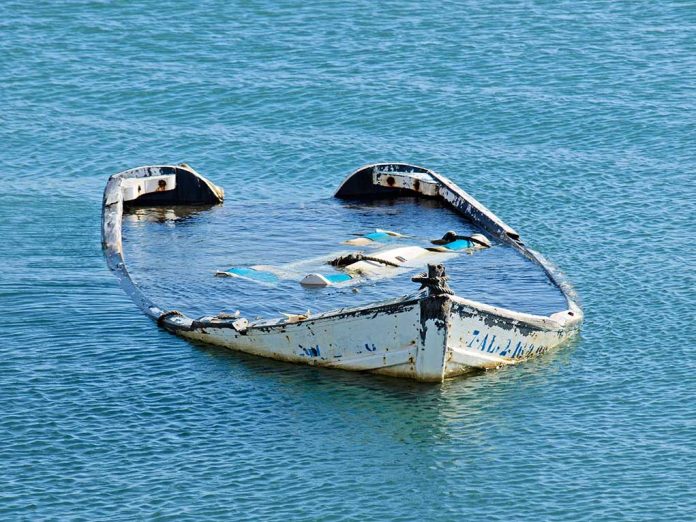
After 250 years of mystery, the legendary HMS Endeavour – the ship that carried Captain James Cook on his historic voyage to Australia – has been discovered in Newport Harbor, Rhode Island, sparking an international dispute over its identification.
Key Takeaways
- The Australian National Maritime Museum has confirmed the wreck in Newport Harbor, Rhode Island as Captain Cook’s HMS Endeavour after 25 years of research
- The ship, later renamed Lord Sandwich, was deliberately sunk by the British in 1778 during the American Revolution to block French and American naval advances
- The Rhode Island Marine Archaeology Project disputes the identification, creating controversy over the announcement
- Researchers identified the vessel through precise measurements matching historical plans, British timber analysis, and distinctive structural features
- The discovery holds significant historical importance for Australia, New Zealand, England, the United States, and indigenous peoples of the Pacific
Historic Maritime Discovery Confirmed
The Australian National Maritime Museum has officially announced that researchers have positively identified the final resting place of Captain James Cook’s HMS Endeavour in Newport Harbor, Rhode Island. This discovery marks the end of decades of searching for the vessel that played a pivotal role in world history as the first European ship to reach eastern Australia and circumnavigate New Zealand. The confirmation comes after extensive underwater investigation at site RI 2394, where archaeological evidence has convinced experts they’ve found the remains of the legendary 18th-century vessel that helped shape the modern world.
“Researchers have confirmed that the 18th-century British explorer Captain James Cook’s lost ship found its final resting place in Rhode Island’s Newport Harbor, solving a decadeslong mystery, according to the Australian National Maritime Museum.” Australian National Maritime Museum.
From Explorer to Revolutionary War Casualty
The story of the Endeavour’s final days reveals a fascinating transformation from explorer vessel to wartime sacrifice. After completing its famous voyage with Captain Cook from 1768 to 1771, the ship was sold into private ownership and eventually purchased by the British Navy during the American Revolution. Renamed Lord Sandwich, the vessel was deliberately scuttled in 1778 as part of a defensive strategy by British forces attempting to block French and American naval advances during the Battle of Rhode Island. This intentional sinking preserved the ship in the waters off Goat Island, where it remained undisturbed for nearly two and a half centuries.
“Maritime experts believe they’ve finally pinpointed the exact resting place of Captain James Cook’s legendary ship just off the coast of a beloved New England resort town.” Australian National Maritime Museum (ANMM).
Controversy Over Identification
Despite the Australian National Maritime Museum’s confidence in their findings, the announcement has sparked controversy among researchers. The Rhode Island Marine Archaeology Project (RIMAP) has contested the identification, suggesting that more evidence is needed before conclusively naming the wreck as the Endeavour. This disagreement highlights the challenges of definitively identifying centuries-old shipwrecks and the competing interests that can arise when multiple organizations are involved in such historically significant discoveries. Nevertheless, the Australian team stands by their assessment, citing compelling evidence from their extensive research.
“This final report is the culmination of 25 years of detailed and meticulous archaeological study on this important vessel. It has involved underwater investigation in the US and extensive research in institutions across the globe.” Daryl Karp, Director of Australian National Maritime Museum.
Compelling Archaeological Evidence
The identification of the Endeavour rests on meticulous archaeological work comparing the wreckage with historical ship plans and records. Researchers discovered that timber measurements from the wreck match the Endeavour’s specifications with remarkable precision, down to millimeters. The site features a linear stone ballast pile, exposed frame ends, four iron cannons, and other structural elements consistent with the Endeavour’s design. Wood analysis confirmed the timber was British, aligning with records of the Endeavour’s repairs in 1776. These findings collectively provide what the Australian team describes as proof “beyond reasonable doubt” of the ship’s identity.
“The size of all the timber scantlings are almost identical to Endeavour, and I’m talking within millimeters – not inches, but millimeters. The stem scarf is identical, absolutely identical.” Kieran Hosty, Australian National Maritime Museum archaeologist.
Historical Significance and Protection
The discovery of the Endeavour represents more than just locating a historic shipwreck; it reconnects us with a vessel that changed the course of history. The ship’s voyages under Captain Cook led to the first detailed European mapping of New Zealand’s coastline and the eastern coast of Australia, forever altering the trajectory of these nations. Given its profound historical and cultural significance to multiple countries and indigenous peoples throughout the Pacific, authorities are now focused on ensuring the wreck site receives appropriate legal and physical protection to preserve this irreplaceable piece of maritime heritage for future generations.
“Given Endeavour’s historical and cultural significance to Australia, Aotearoa New Zealand, England, the United States of America and First Nations peoples throughout the Pacific Ocean, positive identification of its shipwreck site requires securing the highest possible level of legislative and physical protection.” Australian National Maritime Museum.



